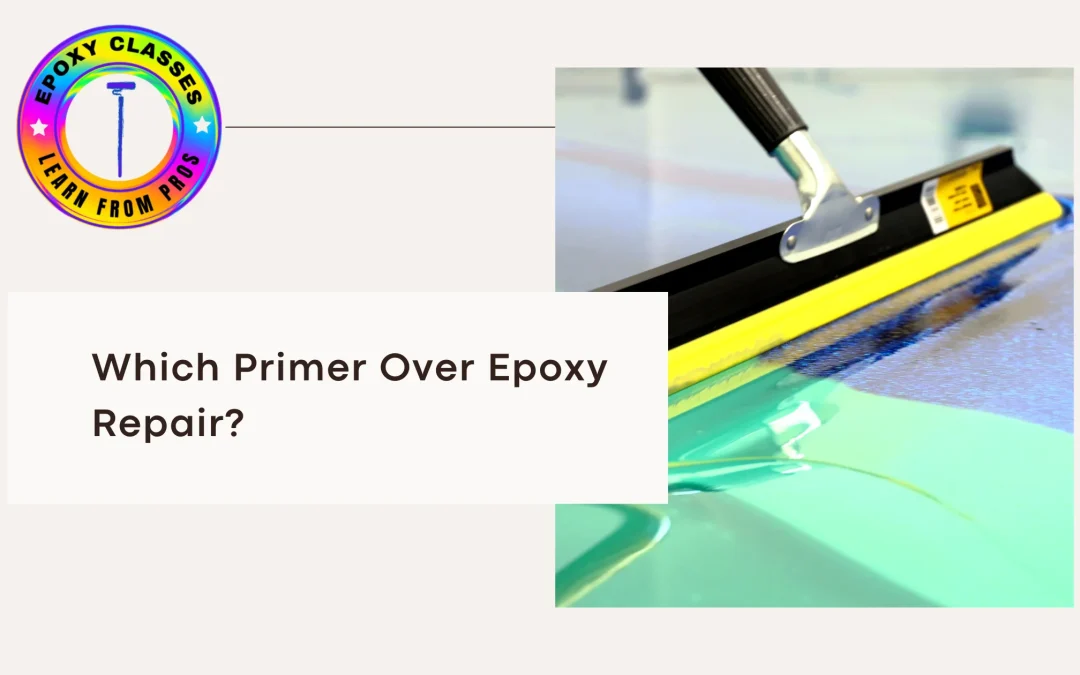When working on epoxy repair, selecting the right primer is essential to ensure long-lasting results. Knowing which primer over epoxy repair works best will make a big difference in your project, whether you’re a DIY enthusiast or a professional looking to sharpen your skills through training.
At EpoxyClasses, we teach the importance of choosing the right products for every step of your epoxy projects. Our hands-on epoxy classes cover everything from surface prep to priming and finishing. Here’s how to select the right primer for your epoxy repairs.
Why Apply a Primer Over Epoxy Repair?
Using a primer over epoxy repair helps in sealing the surface, filling minor imperfections, and ensuring that the topcoat adheres properly. It prevents peeling and cracking while enhancing the overall durability and appearance of your finish.
For epoxy surfaces, epoxy-based primers and high-build primers are typically the best choices. Popular brands like Rust-Oleum EpoxyShield and Zinsser Bulls Eye 1-2-3 offer high performance and strong adhesion, especially over epoxy repairs.
Best Primers for Epoxy Repair
- Epoxy-Based Primers
These primers are made specifically to bond with epoxy repair surfaces, offering excellent adhesion and durability. They are moisture-resistant and perfect for harsh environments. - High-Build Primers
High-build primers like Rust-Oleum 2-in-1 Primer are ideal for filling in minor scratches and uneven surfaces caused by the epoxy repair. They help create a smooth, paint-ready finish. - Self-Etching Primers
If your epoxy repair is on metal or fiberglass, using a self-etching primer like Dupli-Color Self-Etching Primer will improve the adhesion and also offer rust protection.
Step-by-Step Guide for Applying Primer Over Epoxy Repair
- Surface Preparation: Clean the area thoroughly to remove dust and contaminants.
- Sanding the Epoxy Surface: Lightly sand the repaired epoxy area with fine-grit sandpaper (around 220 grit).
- Primer Application: Apply an even coat of your chosen primer using a roller or sprayer.
- Drying Time: Allow the primer to dry completely according to the manufacturer’s instructions before applying the final topcoat.
At EpoxyClasses, we focus on teaching our students all the best practices, from surface prep to applying primer over epoxy repair. Our classes are designed for everyone, whether you’re a beginner or a professional looking to upgrade your skill set.
FAQs
1. Can I skip priming over epoxy repair?
While it may be tempting, skipping the primer can lead to poor adhesion and a shorter lifespan of your topcoat. Priming ensures a smooth and durable finish.
2. What’s the best primer to use on an epoxy repair?
Epoxy-based primers work best for bonding with epoxy repairs, while high-build primers are perfect for filling imperfections on the surface.
3. How long should I wait after priming before painting?
It depends on the product, but most primers require at least 24 hours to dry fully. Always follow the manufacturer’s drying instructions for the best results.
At EpoxyClasses, we offer detailed training on surface preparation, priming, and finishing techniques. Our epoxy classes ensure that you’re equipped with the knowledge and hands-on experience needed to complete your projects successfully. Whether you’re tackling a home DIY or looking to expand your services professionally, our courses will guide you through every step.
Conclusion
Choosing which primer over epoxy repair is crucial for a successful project. Epoxy-based primers and high-build primers offer the best solutions for most applications. At EpoxyClasses, we provide top-tier training to help you master every aspect of epoxy work, from repairs to final finishes. Join our epoxy classes and take your skills to the next level!


